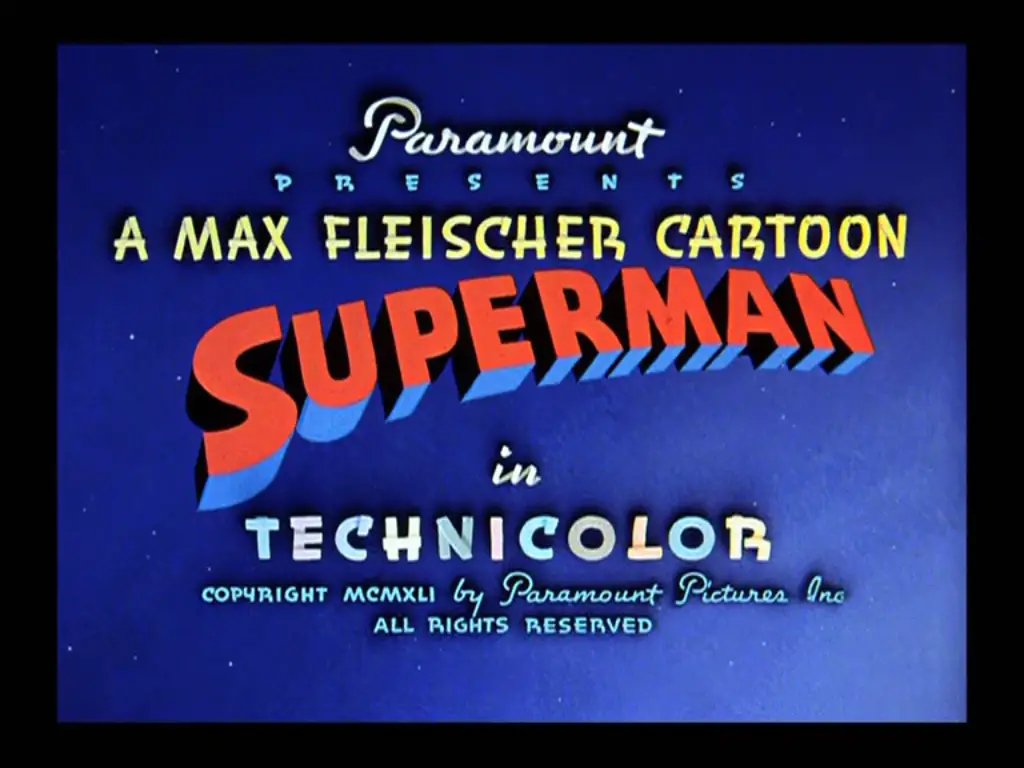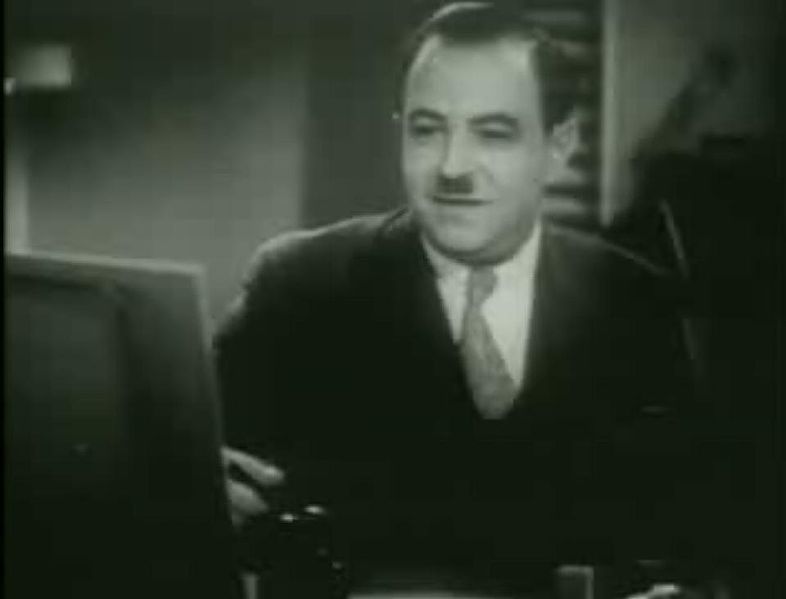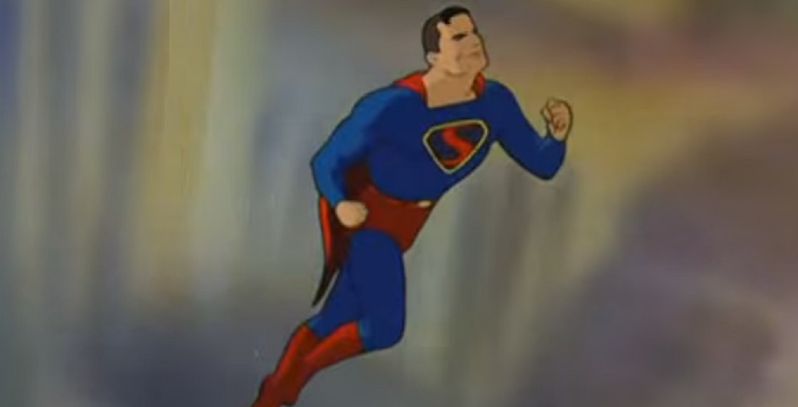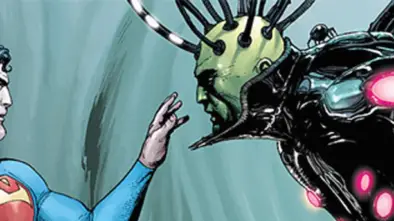Looking Back At The Classic Max Fleischer Superman Cartoons–And Superman’s First Flight
The Max Fleischer Superman cartoons and their creators are legendary for a number of reasons. They were Superman’s first cartoons, and their creators, Dave and Max Fleischer, invented rotoscope: the animation process which is the forerunner of modern motion capture techniques. We take a look back at the history of the classic Max Fleischer Superman cartoons, and look into that controversial part of comic book lore:
Did the Fleischer brothers really give Superman the power of flight?
Paramount Acquires The Rights To Superman
In 1940, Superman was big business. He had already made the transition from his comics Superman and Action Comics to radio and to toy stores. The next stop was Hollywood.
Republic Studios, a motion picture production, and distribution company were in negotiation for the rights to the Man of Steel. But they balked at the price tag set by the comic book publishers and rejected the demand for creative control by Superman’s parent company, National Periodical Publications.
After negotiations broke down, Paramount made a play for the rights from National Periodical Publications. After terms were accepted between the two parties, Paramount turned to the Fleischer Studio, an animation studio the movie studio had a lucrative partnership with.
At the time, the Fleischer Studio was second only to the Walt Disney Company, responsible for the famous cartoon characters, Popeye the Sailor and Betty Boop. Riding on their success, the Fleischer brothers, Max and Dave, had recently relocated to a new and bigger studio in Miami where they produced their first full length animated film, Gulliver’s Travels (1939).
The Fleischer Brothers Resist Paramount

Max Fleischer’s name appeared at the beginning of each production even though his brother, Dave, co-produced. Dave also directed a few episodes including the first.
The acquisition of Superman by Paramount didn’t excite the Fleischers, however. The brothers were concerned with Paramount’s dictates on what cartoons they should make. Furthermore, they were not confident in animating a realistic-looking human, which was a departure from the caricatures and cute animals they were used to animating.
In addition, the brothers learned Paramount would not share any merchandising profits for Superman like they had with Betty Boop and Gulliver’s Travels. As a result, Dave Fleischer tried to dissuade Paramount with a quote of $100,000 per episode (four times the budget of an average cartoon), and a production time of seven months (more than double the normal time frame).
The brothers were certain Paramount would object. But the studio didn’t, though costs would later be renegotiated down to $50,000 for the first episode, and then to $30,000 for later episodes.
The Fleischer’s were now committed, and Superman would showcase their animation talents more than any other cartoon they worked on. While a big deal is made of their rotoscope technique, where animators trace the movements of actors in live-action footage, the majority of the animation was hand-drawn. Many of Superman’s powers could not be rotoscoped such as flying and lifting heavy objects.
The first Max Fleischer Superman cartoon took six months to complete. The episode, entitled Superman (later called The Mad Scientist) was released on September 26th, 1941. Like most Superman origin stories it began with the destruction of Krypton, and Kal-el’s narrow escape to Earth.
Bud Collyer and Joan Alexander, who voiced Superman and Lois Lane in The Adventures of Superman radio show, reprised their roles for the cartoon series. And Jack Mercer, who voiced Popeye, played the Mad Scientist, a character influenced by Boris Karloff’s creepy satanic villain in The Black Cat (1934). The episode was well-received and nominated for the 1941 Academy Award for Best Short Subject.
The Fleischer brothers relationship breaks down
By the end of 1941, Dave and Max Fleischer could no longer work with each other. The first Max Fleischer Superman cartoon had just been released a few months earlier when Dave moved to California. Paramount, sensing disaster, decided to remove the brothers from their own company.

A between Max Fleischer (shown here) and his brother ended their partnership. The company became Famous Studios, and the tone and storylines of the Superman cartoons changed.
By the time of their departure, the Fleischer brothers had produced nine Superman episodes in total. But the Superman cartoons did not die with their exit. Fleischer Studios was renamed Famous Studios. But with a name change, and new management, came a noticeable shift in tone and storylines for the final eight Superman episodes produced by Famous Studios. The Fleischer’s focused on storylines with a science fiction theme, with Superman battling mechanical monsters, an arctic dinosaur, stopping a meteor careering to Earth, and diverting the lava flow of a volcano. The final episodes under Famous Studios shifted to World War II propaganda with the Man of Steel thwarting Nazi and Japanese plots.
But the changes made by Famous Studios couldn’t wipe out the legacy of the Max Fleischer Superman cartoons. The Fleischers coined the phrase, “Faster than a speeding bullet! More powerful than a locomotive! Able to leap tall buildings in a single bound!”, which opened the first seven episodes of the series, and which was appropriated by the radio series, and the live-action series a decade later.
The line is still entrenched in popular consciousness today. Nobody remembers the line Famous Studios replaced it with for seven out of eight of their episodes. “Faster than a streak of lightning! More powerful than the pounding surf! Mightier than a roaring hurricane!” just doesn’t have the same impact.
Finally, the cost of the series and waning interest led Paramount to pull the plug on the series.
Did the Fleischer Brothers Give Superman His First Flight?

For decades, comic book fans believed that the Fleischer brothers gave Superman the power of flight. The story goes that the Fleischer’s thought Superman looked silly leaping tall buildings in a single bound and asked National Comics if they could change his power to flight. The comic publisher agreed, and Superman has flown ever since.
The story is accurate but omits that Superman had flown before. Comic book artist Leo Nowak accidentally made Superman fly in 1941’s “Superman” #10, and the Man of Steel was airborne from the second episode of the radio show, The Adventures of Superman. The radio show made legend the line “Up in the sky! Look!” “It’s a bird!” “It’s a plane!” “It’s Superman!”
By the time the Fleischers made Superman fly, he had already been doing so for over a year on the radio show!
Still, what seems to be true is that National Comics (later DC Comics) was influenced by the Max Fleischer Superman cartoons and as a result gave the comic book Man of Steel the same power. And the rest, as they say, is history.
- Heart of Stone: Female Bond-Clone References Moonraker, On Her Majesty’s Secret Service and Other Bond Films - February 8, 2024
- How Editor Peter Hunt Saved ‘From Russia With Love’ - January 27, 2024
- This Periodic Table of Tropes Is The Ultimate Storytelling Infographic - January 22, 2024




